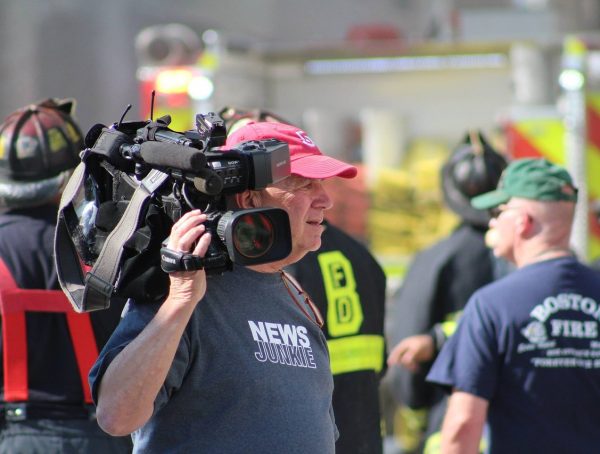Protests in response to the police killing of George Floyd forced journalists around the country to leave behind their socially distanced reporting and come out into the crowded streets. Suddenly, they faced many unknowns and had to juggle the possibility of the virus infection, dangers from the protests, and increased instances of attacks and arrests.
“I think there were so many moving parts to this one, as opposed to some of the other demonstrations and protests that I covered, not to mention the escalation of violence,” said Kevin Holmes, anchor and reporter for KSHB-TV in Kansas City, MO.
According to Sarah Matthews, staff attorney for the Reporters Committee for Freedom of the Press, over 470 press freedom incidents have been reported to the U.S. press freedom tracker since the end of May when the protests started. She said this unprecedented number of incidences included journalists getting attacked, shot with rubber bullets, tear-gassed or pepper-sprayed, and arrested.
“Just to give you a sense of how large those numbers are, and how big of a spike we’re seeing, tracker recorded a total of 152 incidents for all of 2000,” Matthews said.
So, how can you stay safe? Matthews said do your homework in advance. Check with local police to make sure that the personal protective equipment you want to bring is permitted.
“Sometimes they have restrictions around that,” she said. “If police are using rubber bullets, you know, bring a helmet and a trauma kit, if you expect pepper spray or tear gas, bring a whole face gas mask.”
Never report on protests alone. Teaming up with a photographer, another reporter, or a security guard helps with situational awareness and understanding of what is happening around you.
“It’s really easy to get kind of lost in your camera, lost in your pen and pad if you’re there by yourself. However, if you have someone else with you, you can always play lookout,” Holmes said.
Always think about your exit strategy if things get bad quickly. Christina Gonzales, reporter for KTTV in Los Angeles, said when she is reporting on protests, she is always looking for the most defensible space for herself, such as a tree.
“I’m always looking for a place where I can put my camera especially and myself, you know, and I’m always watching that blind spot,” Gonzales said.
Wear press credentials prominently so you are identified as a member of the press and comply with police orders.
“It’s true that you have a First Amendment right to record a protest,” Matthews said. “But if there is a general dispersal order, it is important to follow that order or you could face being arrested.”
If you do get arrested, police will take your phone away so Gonzales said memorize or write down on a piece of paper phone numbers of people you could call for help.
Safely reporting on what is going on during protests is important, but Holmes said explaining why this is happening is just as important.
“As we were out there reporting, we gave them the best point of view we could, but we never lost track of why – why is this happening, what is the demand, and what is next,” he said.
Our experts shared their views during the webinar “Reporting on Protest: Lessons from the Frontlines” organized by TVNewsCheck.








